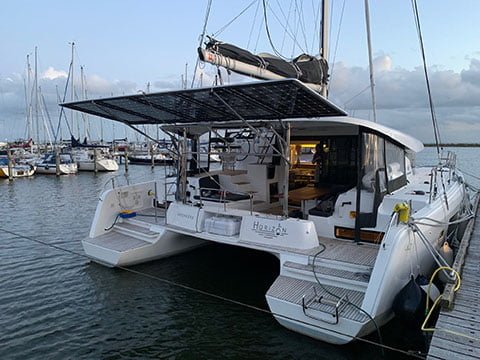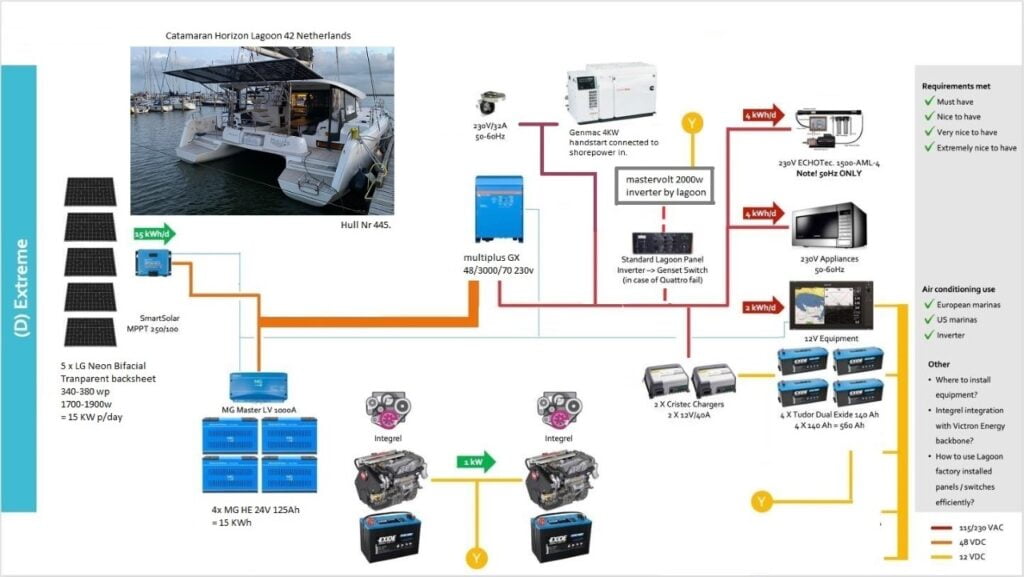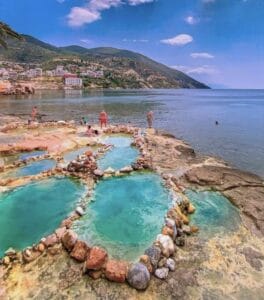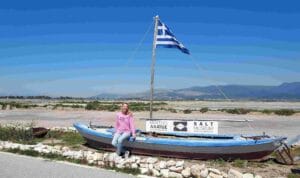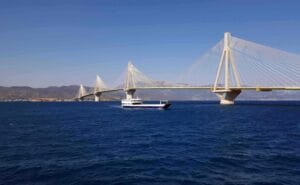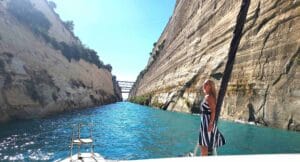When travelling the world on a boat, it is important to be self sufficient in your enery needs. You don’t want to end up in the middle of the ocean or on an island with no water or electricity! This is how we created an off the grid system to be self sufficient when travelling the world!
On a boat, it is smart to have redundancy, that means you always have 2 different solutions for each need. So when it comes to cooking, we can cook on gas, but also on electricity. We have an oven, but also a separate microwave-combo. We have 2 different refrigerators and a separate freezer. There is a washing machine and a dishwasher on board, but of course washing can also be done manually.
The 2 main energy topics on a ship are: how much power and water do you need daily?
When it comes to power, we calculated that we need 1700 watts of solar power to generate up to 10 KW of power every day. The 10 KW is the maximum we need every day in case we have 4 guests on board. We have collaborated with New Energy Today in Holland: they helped to install the Victron multiplus GX inverter connected to 4 MG HE Series lithium batteries, to provide a total of 15 KW of storage capacity.
We designed ourselves a rack for 5 solar panels at the back of the boat. We used LG bi-facial solar panels in this rack. The 5 panels are transparent, so they can pick up the light from both sides: on top direct sunlight and the other side, the panel picks up the reflection from the sun in the water.
The solar rack is adaptable in angle from 0 to 180 degrees, so we choose the best angle to pick up the sunlight during daytime and optimize the power generation.
The solar panels are attached behind the boat, at the end of the roof and not on top of the roof, to create shade above our dinghy, so UV will have less impact to help its longevity. Next to that, solar panels at the back of your boat is easier for maintenance and diving from the rooftop of the catamaran into the water!
Next to energy storage, you also have to have enough drinking water on board. Especially when you are crossing oceans. For instance, when you cross the Atlantic ocean, you need drinking water for at least 3 weeks, because there are no or very few islands to get fresh water. Our catamaran has 2 watertanks which have a capacity of 300 liters each. That will not be enough when you make long trips acrosss blue waters with a crew. So we imported a watermaker from Seawater Pro, a specialized company in Fort Lauderdale, Florida and installed it in one of the engine rooms in our catamaran. The watermaker pumps sea water through a membrane at high pressure of about 800 Psi. For each litre of salt water, one can generate 100 ml of fresh drinking water. Our system can pump 1200 litres of sea water per hour through the membrane, to generate 120 litres of fresh water.
